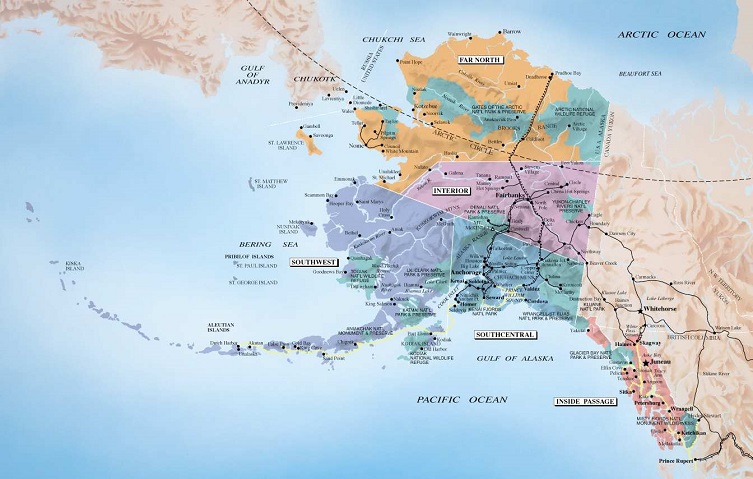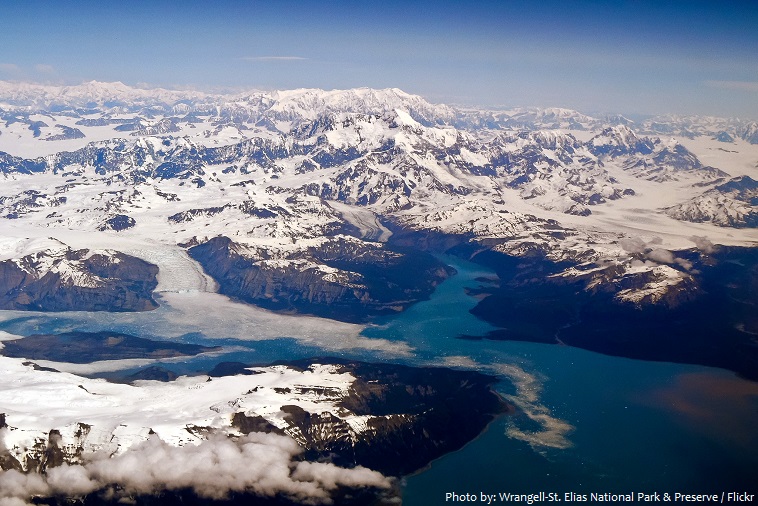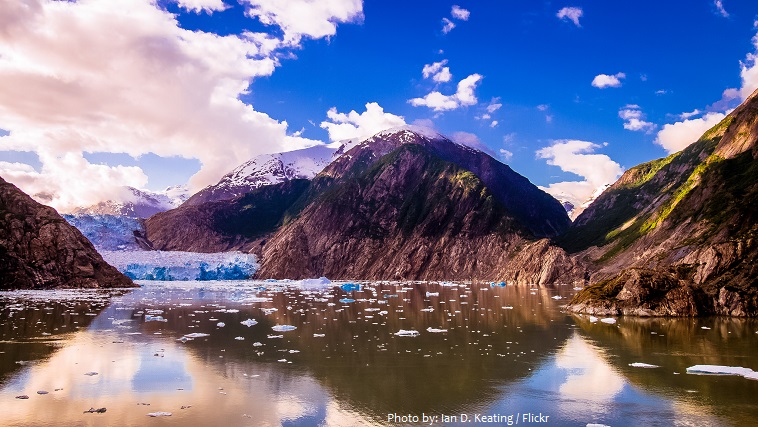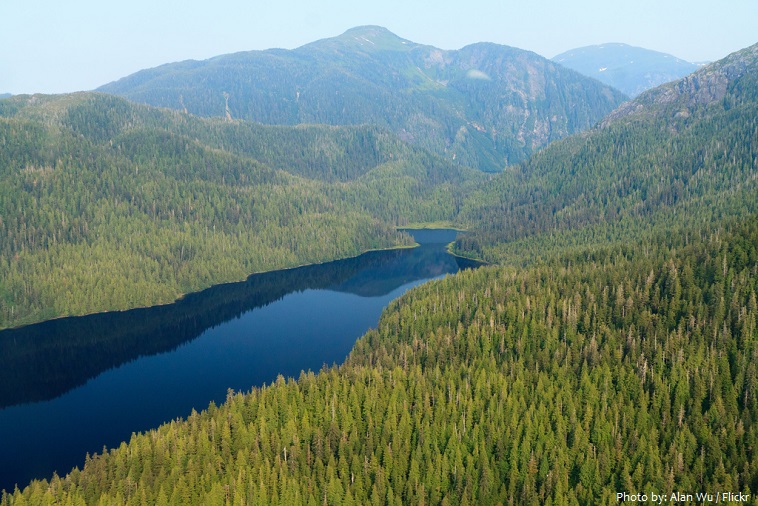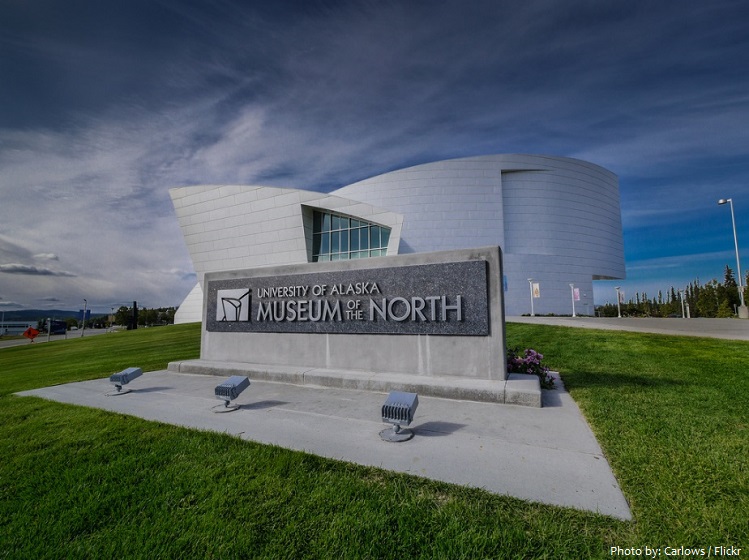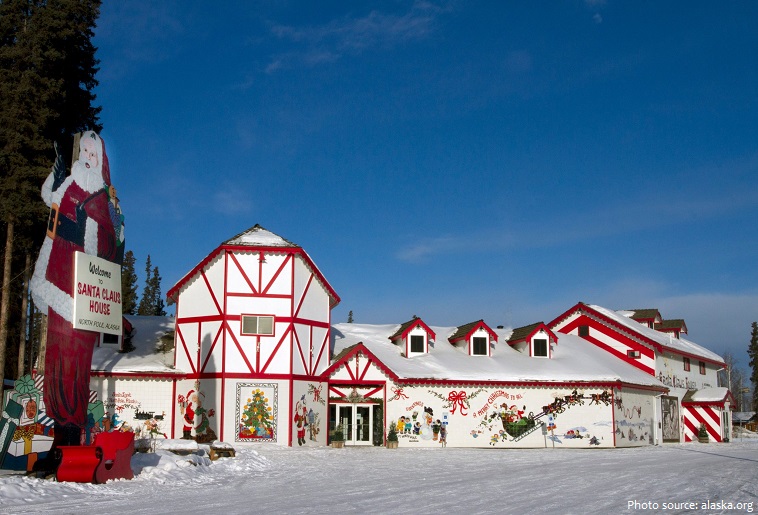Alaska is a U.S. state located in the northwest extremity of North America.
It is bordered by Canada to the east, the Arctic Ocean to the north and the Pacific Ocean to the south and west.
Alaska is one of two U.S. states not bordered by another state; Hawaii the other.
As of 1 January 2017, the population of Alaska was estimated to be 746,079 people. It is the 3rd least populous and the most sparsely populated of the 50 United States.
Alaska is the largest state in the United States in terms of total area with 1,717,856 square kilometers (663,268 square miles). Alaska is larger than all but 18 sovereign countries.
The United States purchased Alaska from the Russian Empire on March 30, 1867, for 7.2 million U.S. dollars at at approximately $4.7 per square kilometer or 2 cents per acre.
The area went through several administrative changes before becoming organized as a territory on May 11, 1912. It was admitted as the 49th state of the U.S. on January 3, 1959.
The City and Borough of Juneau commonly known as Juneau, is the capital city of Alaska. It is the second largest city in the United States by area. Juneau is rather unusual among U.S. capitals (except Honolulu, Hawaii) in that there are no roads connecting the city to the rest of Alaska or to the rest of North America (although ferry service is available for cars).
The name “Alaska” was introduced in the Russian colonial period when it was used to refer to the peninsula. It was derived from an Aleut, or Unangam idiom, which figuratively refers to the mainland of Alaska. Literally, it means object to which the action of the sea is directed.
Wild and beautiful Alaska is home to majestic mountains, glaciers, active volcanoes, huge tracks of forested land and some of the planet’s most varied extremes of cold, heat, rain, snow and wind.
Because it extends into the Eastern Hemisphere, it is technically both the westernmost and easternmost state in the United States, as well as also being the northernmost.
Major geographical regions (north to south) include the Arctic Coastal Plain, North Slope, Brooks Mountain Range, a central upland dissected by the Yukon River, the massive Alaska Mountain Range, the Pacific Coastal areas and eastern Inside Passage, and the Alaskan Peninsula, and Aleutian Islands of the southwest.
Alaska has 39 mountain ranges, containing 17 of the 20 highest peaks in the United States.
Denali (also known as Mount McKinley, its former official name) is the tallest mountain in North America. Located in the Alaska Range in south-central Alaska, the mountain’s peak is 6,190 meters (20,310 feet) above sea level, also making it the third highest of the Seven Summits — the highest mountains on each of the seven continents — following Mount Everest in Nepal and Aconcagua in Argentina. Denali is also the centerpiece of Denali National Park and Preserve.
Alaska is home to 3.5 million lakes of 8 hectares (20 acres) or larger.
In Alaska glaciers cover 75,100 square kilometers (29,000 square miles) or almost 5 % of the state. There are an estimated 100,000 glaciers in Alaska, ranging from tiny cirque glaciers to huge valley glaciers. The largest glacier is the Malaspina at 2,200 square kilometers (850 square miles).
There are more than 70 potentially active volcanoes in Alaska. Several have erupted in recent times. The largest eruption in the world in the 20th century occurred in 1912 at Novarupta on the Alaska Peninsula.
The Alaskan coastline extends for 10,690 kilometers (6,640 miles), a distance greater than that of all the other states’ coastlines combined.
Strictly speaking, Alaska has eight national parks: Denali, Gates of the Arctic, Glacier Bay, Katmai, Kenai Fjords, Kobuk Valley, Lake Clark and Wrangell-St. Elias.
Wrangell-St. Elias National Park is the largest national park in the United States at 53,320 square kilometers (20,587 square miles) It is vast — bigger than Switzerland. The park represents everything that is compelling about Alaska. It showcases towering mountains (Mount St. Elias stands 5,489 meters or 18,008 feet tall) and accessible glaciers. The state’s human history is on display in the historic mining communities of McCarthy and Kennicott.
A fjord edged with glaciers, Tracy Arm is located south of Juneau and is a popular destination for cruise ships and boat tours. Waterfalls tumble down the sharp rock walls and glaciers calve, creating small icebergs. The scenic setting lies within the bounds of the Tongass National Forest.
The Tongass National Forest in Southeast Alaska is the largest national forest in the United States at 69,000 square kilometers (17 million acres). Most of its area is part of the temperate rain forest WWF ecoregion, itself part of the larger Pacific temperate rain forest WWF ecoregion, and is remote enough to be home to many species of endangered and rare flora and fauna.
One of the up-sides to Alaska’s long dark winters are the glowing Northern Lights that appear on many nights from September to mid-April. Some of the best aurora borealis viewing happens in the Fairbanks area. The peak time to watch for solar particles in the Earth‘s magnetic field is after midnight. Many Alaska hotels even offer a northern lights wake-up call (upon request, of course) to wake visitors when the lights are out.
Located on the University of Alaska Fairbanks campus, the Museum of the North is a world-class museum stuffed with fascinating exhibits covering Alaska’s history, art, and culture. The Gallery of Alaska covers each region of the state, addressing both human and natural history. Highlights of this gallery include the coverage of mammoths and mastodons and the magnificent display of gold and gold nuggets. The Alaska Classics art gallery features historical paintings, while upstairs the Rose Berry Alaska Art Gallery focuses on contemporary Alaskan art.
John Ben “Benny” Benson, Jr. designed the flag of Alaska. Benny was 13 when he won a contest in 1927 to design the flag for the Territory of Alaska, which became a U.S. state in 1959. Benny’s design was simple yet elegant: eight stars of gold in the shape of the Ursa Major constellation (the Big Dipper) set against a deep blue backdrop representing Alaska’s sky and forget-me-not flower.
Alaska’s Nicknames include: “The Last Frontier”, “Land of the Midnight Sun” and “Seward’s Icebox.”
Alaska’s state motto is “North to the Future.”
The lowest Alaska temperature is −62.2 °C (−80 °F) in Prospect Creek on January 23, 1971 – it is the coldest temperature ever recorded in the U.S. Alaska also holds the extreme US record low temperatures for every month except July and August.
Alaska is the most earthquake-prone state and one of the most seismically active regions in the world.
The largest recorded earthquake in the United States was a magnitude 9.2 that struck Prince William Sound, Alaska on Good Friday, March 28, 1964 UTC.
There is also a city named North Pole in Alaska where a tourist attraction known as the “Santa Claus House” has been established. The United States Postal Service uses the city’s ZIP code of 99705 as their advertised postal code for Santa Claus. Prior to Christmas each year, the USPS post office in North Pole receives hundreds of thousands of letters to Santa Claus.
Haines, Alaska is home to the world’s first museum dedicated to preserving the history of the hammer. From the land of the pharaohs to the land down under, ancient to modern, or 5 cm (2 in) to 6 meters 20 feet, the Hammer Museum has something for everyone.
Some of Alaska’s bizarre moose-specific legislation has included laws against pushing a moose from a plane, viewing a moose from a plane, and giving a moose beer. It is also illegal to whisper in someone’s ear while they are moose hunting.
You might be surprised to learn that crops from a certain part of Alaska are well-deserving of the title “super-crops.” Why is that? As it turns out, there are no less that 20 hours of sun daily during certain periods in this state. Coincidentally, giant crops enjoy this much exposure to the sun immensely, which leads to gargantuan results – quite literally. Examples of giant crops that are too big to believe include a 16-kilogram (35-pound) broccoli, a 29.5-kilogram (65-pound) cantaloupe and a 62.5-kilogram (138-pound) cabbage.
Even though residents of Barrow, the northernmost town in Alaska, won’t see the sun for 67 days come winter, they enjoy the midnight sun all summer – over 80 days of uninterrupted daylight.
Alaska is the most popular state for flying in the U.S. One of every 58 Alaskans is a registered pilot, and one out of 59 owns an airplane.
Alaska is the only US state whose name can be typed on a single row of a standard keyboard.
Stubbs was a cat who was the mayor of Talkeetna, Alaska from July 1997 until his death in 2017.


